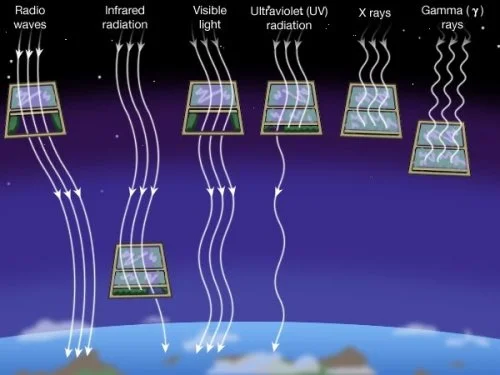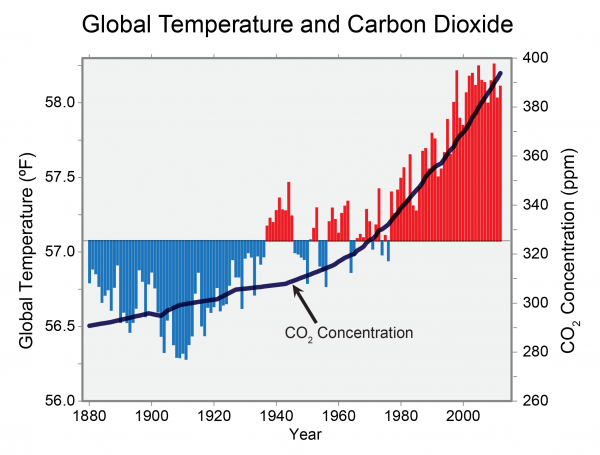What are Global Warming and Climate Change?
Before we can have serious discussion about climate change, we have to first define our terms. We see the terms “global warming” and “climate change” used almost interchangeably. What do these terms actually mean?
The Greenhouse Effect and Our Miraculous Atmosphere
Among the countless miracles that Hashem has built into our world are the remarkable properties of the atmosphere that make life possible on earth. In order for us to live on earth, numerous ingredients are needed. Among those are light and heat. Without light, even plant life would be absolutely impossible. Without heat, all the water on the planet would freeze and once again no life would be possible. We receive both of these in abundance through sunlight.
The problem with the sun as a light source is that it not only radiates visible light, but other forms of radiation which are extremely damaging and, in large quantities, are destructive to life, such as x-rays, gamma rays and ultraviolet light. One miraculous feature of the atmosphere is that it contains gases, such as ozone, which absorb most of the harmful radiation preventing it from ever reaching the earth. What does get through is mainly the visible light that we need. This phenomenon is known as the atmospheric window effect. This fulfills our need for visible light.
A representation of the atmospheric window effect
Note: The relative amounts of each type of radiation are not accurately represented
What about our need for heat? That does not come about so simply. The visible light hits the earth, but only around 50% of this energy is absorbed by the earth’s surface, heating up the earth and atmosphere. However, this heating alone is not sufficient to sustain life. If nothing else happened, the earth’s average surface temperature would still only be -18°C (-0.4℉), keeping all the earth’s water below freezing point and making the ongoing existence of life impossible.
But this is where another miraculous feature of the atmosphere comes into play. If only 50% of the energy is absorbed by the earth’s surface, what happens to the other 50%? It’s converted into what is called blackbody radiation, in this case mostly infrared light, which is then radiated out from the earth. The fact that it is mostly infrared turns out to be very important. While visible light passes through the atmosphere mostly unhindered, which is how it got to the earth in the first place, infrared light is absorbed by specific gases in our atmosphere, known as greenhouse gases. These gases, the bulk of which are water vapor, carbon dioxide and methane gas, trap the infrared light and are heated up by it, warming the atmosphere to temperatures which can sustain life. This phenomenon is known as the greenhouse effect. This is not some new threat that has recently emerged, wreaking havoc on the globe, as some have perceived it to be. It is actually a blessing that has been around essentially as long as the atmosphere itself, making life possible on earth.
These incredible phenomena reveal some of the brilliance of our atmosphere’s design, that it, on the one hand, shields us from dangerous solar radiation, while allowing what we need to get through, then trapping just enough energy on the return to enable us to live.
Global Warming
Too Much of a Good Thing
So what’s the problem? The problem is that while we need greenhouse gases to survive, an excess of greenhouse gases in the atmosphere will lead to too much warming.
What determines the level of greenhouse gases in the atmosphere? The truth is that the vast majority of the greenhouse gases in the atmosphere have nothing to do with humans. They mostly consist of water vapor which evaporates from the oceans. In fact, the vast majority of carbon dioxide in the atmosphere is not generated by humans either. So this raises the question again, what’s the problem?
Our earth contains entities which emit massive volumes of carbon dioxide, known as carbon sources, such as the oceans, decomposing vegetation, volcanoes and natural wildfires. It contains other entities which absorb massive volumes of carbon dioxide, known as carbon sinks, such as rainforests, the oceans (again) and the soil. These carbon sources and sinks balance each other out and leave the amount of carbon dioxide in the atmosphere roughly constant.
Human activity causes significant emission of carbon dioxide into the atmosphere, not very much relative to the total amount of carbon being emitted (< 4%), but still significant enough to affect the natural balance of the carbon.
What happens if increased levels of carbon dioxide are emitted into the atmosphere? One effect is to increase plant growth, which will have a knock-on effect of absorbing carbon dioxide. In other words, an increase of carbon dioxide in the atmosphere will indirectly lead to a subsequent decrease of carbon dioxide. Such an effect is an example of what is called a negative feedback loop, because the initial increase of carbon dioxide feeds back into the system leading to its own negation.
That sounds quite encouraging. The problem is that the increased plant growth is not enough to absorb all the additional carbon dioxide. Only 40% of the additional carbon dioxide is absorbed. The rest accumulates in the atmosphere. This process can be seen in what is known as the Keeling Curve.
The Keeling Curve
(Need to get permission)
The Keeling Curve, based on CO2 concentration measurements by Professor Charles David Keeling on the island of Mauna Loa, Hawaii, shows how increases in CO2 concentration in the warm seasons are consistently followed by a decrease in the rainy season when vegetation growth increases. Despite the negative feedback loop, the CO2 concentration keeps climbing overall.
Examination of temperature and CO2 concentration over thousands of years shows a very clear correlation between them, indicating that higher CO2 levels have led to a rise in the average temperature around the globe (in science-speak, the global mean temperature). This is not to say that the average temperature in all locations has increased. How the climate works is very complicated. In some places it has increased, while in others it has decreased, but overall the global mean temperature has certainly increased. This is what is meant by the term global warming.
Global temperatures have risen with the increase of carbon dioxide concentration in the atmosphere
(Need to ask permission from https://climatefeedback.org/claimreview/link-between-co2-earth-temperature-well-established-despite-claims-fox-news-tom-harris/)
Because human action is the primary cause of global warming, it is commonly described as Anthropogenic Global Warming (or AGW), which is a fancy way of saying that the global warming is man-made.
Global Warming or Climate Change?
So that’s global warming. Where does climate change come into the picture?
You may have heard some conspiracy theorists claim that climate activists changed their terminology and started talking about Climate Change instead of Global Warming because it was becoming clear that the globe isn’t actually warming.
The real story is as follows. Global warming refers to the increase in the global mean temperature as discussed above, which is most definitely happening. However, the effects of Global Warming on the climate are very wide-ranging. Global warming increases the probability and frequency of extreme weather events of several kinds. Some you might have expected, such as extreme heatwaves, droughts and famines. Others you might not have, such as extreme rainfall and extreme cold spells in some locations. All these phenomena and more are what are included in climate change caused by global warming.
Now that we’ve defined our terms, we can discuss whether climate change and global warming are real.



